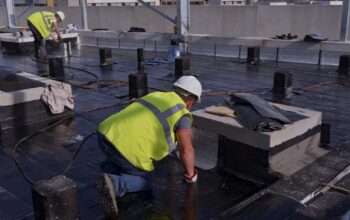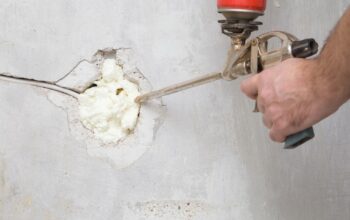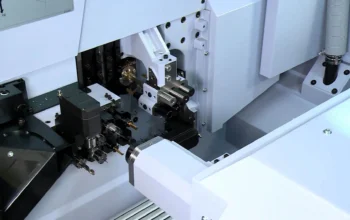Satin anodized finish beautifies metal surfaces more uniquely than most alternatives do regarding material longevity and visual aesthetics. Satin anodized surface treatment has become increasingly popular for its application across consumer goods industrial purposes and architectural designs. Designers along with builders find the satin anodized finish attractive because it provides a thin delicate finish with no shine. Fans of this conclusion need to consider what makes it so extraordinary. They will analyze the distinctive features alongside the benefits and applications of satin anodised finish which JM Aluminium uses in their aluminum profile products.
An Overview of Satin Finish and Anodizing
One must understand how anodizing functions to appreciate satin anodized finish characteristics. Anodizing uses electric current to apply corrosion-resistant surface coatings which maintain their durability over time. When the technique is performed in an acidic electrolyte fluid, an electric current flows through the submerged metal. The process receives its name “anodizing” because of its electric current usage.
The satin anodized finish differs from other anodized coatings because it creates a particular surface pattern. An anodized finish of satin quality exists between regular anodizing completion levels which range from glossy to matte appearance. The surface creates a soft reflective quality that does not produce intense glare. A proper mechanical or chemical pre-treatment of aluminum profiles prepares them for anodizing.
The Advantages of Anodized Satin Finish
Excellent Sturdiness and Lifespan
Satin anodized products demonstrate phenomenal lastingness as their standout characteristic. The finish created by anodizing becomes an integral component of the metal whereas paint and other coatings represent external layer additions to the metal surface. The aluminum metal organically forms the final result, making it resistant to chipping, peeling, and flaking over time. Aluminum profile products produced by JM Aluminium will maintain their attractive appearance throughout dozens of years despite exposure to tough environmental conditions.
The anodized coating provides better abrasion protection because it exhibits higher hardness than standard aluminium profile materials. For applications requiring frequent handling or heavy traffic areas, this makes satin anodized finish items especially appropriate.
Resistance to Corrosion and Weather
Excellent resistance to environmental variables is provided by satin anodized finish items made of aluminum profiles. The anodized layer is perfect for outdoor applications because it forms a barrier that prevents the metal from oxidizing. Rain, sun, and pollutants don’t affect the integrity and beauty of the satin anodized finish.
In coastal regions, where salt air may swiftly break down untreated metals, this is especially beneficial. Products with the appropriate satin anodized finish from producers such as JM Aluminium can endure these severe circumstances for many years without corroding.
Visually Appealing Instance
Perhaps a satin anodized finish’s most obvious feature is its aesthetic attractiveness. Its uniformly smooth surface adds a classy appearance to aluminum profile objects, highlighting their inherent beauty. The delicate sheen softly catches light and diffuses it rather of creating harsh reflections or glare.
The high demand for satin anodized finish among modern interior designers and architects results from its broad range of design possibilities. This finish creates a unified visual effect through its delicate appearance so aluminum profile parts add to other design features without becoming dominant.
Minimal Cleaning Needs
Products finished in satin anodization require minimal care for maintenance purposes. Surfaces that use satin anodized finish need maintenance only through periodic applications of water and soap since they do not require the same frequent polishing requirements that other finishes do.
Satin anodized finish proves most suitable for buildings because it maintains itself with minimal upkeep even when complete maintenance access is costly or hard to obtain. The advantage of low maintenance drives JM Aluminium and other businesses to highlight satin anodized finish aluminum profile products within their marketing strategies.
Usage in Architecture
The architectural sector has adopted satin anodized finish for a variety of uses. Aluminum profile goods with this finish are incredibly versatile, ranging from window frames and curtain walls to handrails and ornamental panels. A superb option for both external and interior architectural elements, the satin anodized finish combines weather resistance, durability, and aesthetic appeal.
Because it gives all components a uniform look, many architects opt for a satin anodized finish for large-scale projects. Visual harmony is ensured throughout a building design by the ability of manufacturers like JM Aluminium to make aluminum profile components with matching finishes.
Consumable Goods
satin anodized finish has been incorporated into many consumer goods outside of architecture. A satin anodized finish appears on multiple types of appliances together with furniture alongside electronics and athletic equipment. The satin anodized finish on these products provides a soft touchable texture that reduces fingerprint smears better than glossy finishes do.
Producers like how satin anodized finish can raise the perceived quality of their goods. The market worth and customer appreciation of an item with this premium finish are frequently higher than those of the same thing with a standard finish.
How Things Are Made
Creating a superior satin anodized finish calls for accuracy and skill.JM Aluminium together with other top manufacturers utilizes advanced procedures to achieve uniform consistency in their aluminum profile products.
The metal profile must be cleaned to get rid of any contaminants before the procedure can begin. After cleaning the surface the satin appearance emerges through chemical or mechanical processing. Different methods are employed to create the satin finish including chemical etching along with bead blasting and fine brushing according to the desired outcome.
The aluminum profile goes through an acid bath solution under electrical current power to perform the real anodizing process. Under specific requirements applications, the anodized layer can reach exact thickness values. Post-processing of the surface involves blockage of its pores to increase both durability and corrosion resistance.
Quality control remains essential from beginning to end throughout the manufacturing process. To make sure their satin anodized finish satisfies industry standards and client expectations, reputable manufacturers like JM Aluminium carry out extensive testing.
Conclusion:
The unique characteristics of the satin anodized finish make it a superb option for aluminum profile goods in a variety of applications. It delivers value that few other finishes can match because of its special blend of longevity, resistance to corrosion, visual attractiveness, and little maintenance needs.
Satin anodized finish maintains its appeal because of its elegant look and functional benefits which work effectively in industrial components and high-end consumer goods and dramatic architectural expressions. Top producers like JM Aluminium have achieved expertise in satin anodized finish surface production leading to the creation of aluminum profile goods that provide both visual appeal and extended durability to customers.
Utilization of satin anodized finish products will remain strong amongst designers and architects and manufacturers and consumers because they combine traditional elegance and operational effectiveness.



